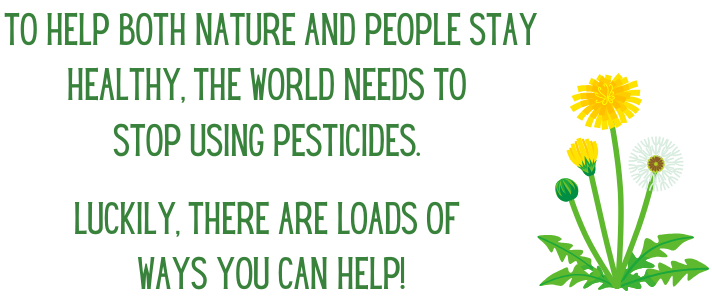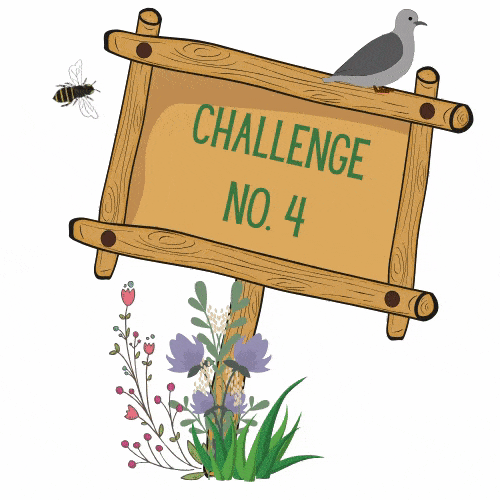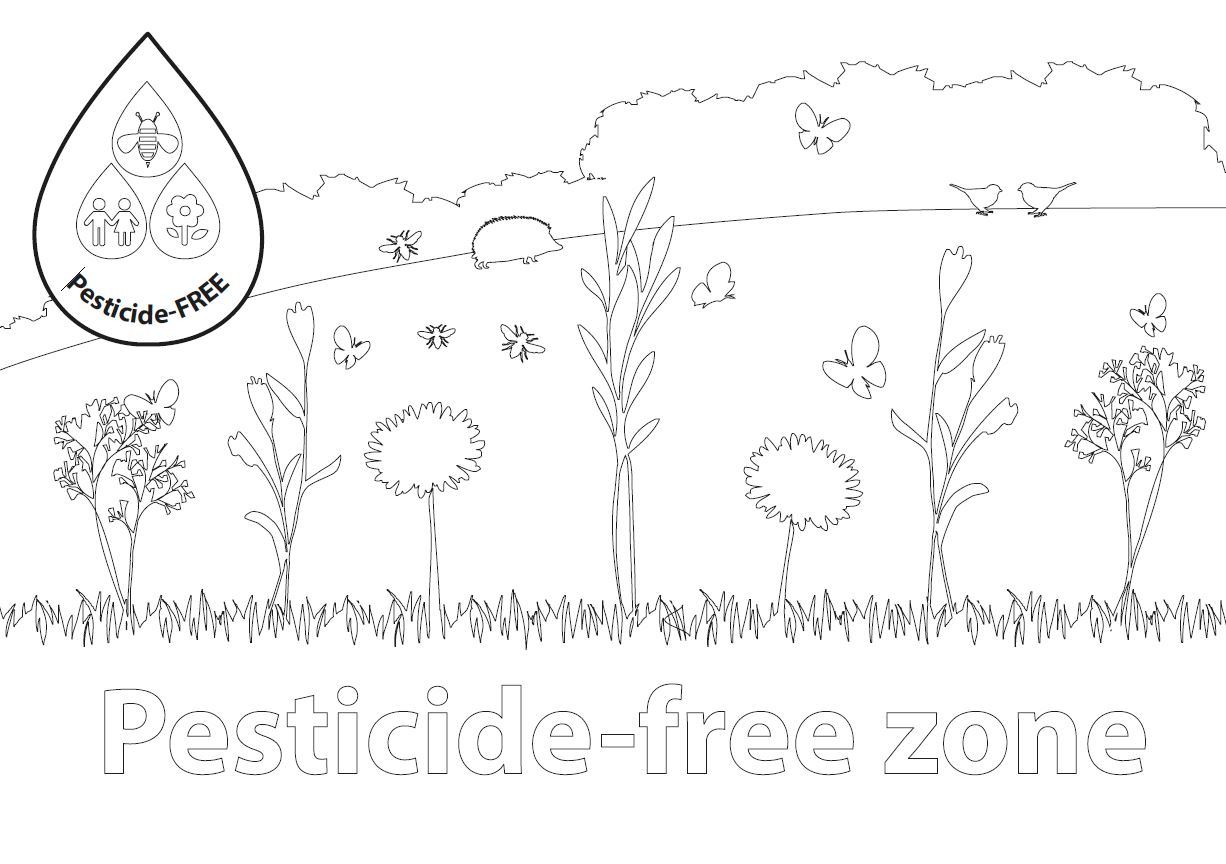

What are pesticides? Some plants, insects and fungi can become pests when there are too many of them or when they grow in places we don’t want them to grow. Pesticides are chemicals that people use to kill these pests and keep their numbers low.
Most pesticides are used by farmers to get rid of insects that may damage the food crops they are growing, or to stop weeds getting in the way. Gardeners also use pesticides to kill any insects that may be eating their plants or vegetables. But pesticides are also used in our towns and cities to stop weeds growing on pavements and in parks. They are even used in schools to stop weeds growing on playgrounds or sports fields!

(Mini challenge: How many insects can you find on this page?)


Pesticides can be very harmful to animals, plants and sometimes even humans!
Pesticides can accidentally kill insects like bees that aren’t pests. 
Pesticides can be harmful to all plants and sometimes even kills those that aren’t weeds. Plants are important for keeping our world healthy and green and they provide food and shelter for many animals. They also take in carbon dioxide and so are important in the fight against climate change.
And finally, pesticides can be bad for human health if they are in our food or if we come into direct contact with them.



Plant a bee friendly plant in the garden or on your windowsill. Take a look at the list below – do you already have any of these insect-friendly plants in the garden?
Remember: Make sure any plants or seeds you buy have the word ‘organic’ on the label. This means they are pesticide–free!
Sometimes pesticides destroy the flowers that bees and other insects feed on. But if you plant flowers outside you are helping to feed them! Count how many bees and other insects visit your flowers. You could do it every day and write down how many you see so you will know if more insects are visiting your garden.


This is an easy one – write a letter to someone else you know (especially if they have a garden) and ask them not to use pesticides and explain why they shouldn’t.
Do your friends and family know about the dangers of pesticides? Do they have gardens of their own? Write to them and tell them why they shouldn’t use pesticides in their garden! You can decorate your letter with pictures of the insects, birds, animals and plants that can be found in a healthy garden.
Send us pictures of your plants, letters and posters to share!


This is almost too easy!
Print out the Pesticide-Free Zone Poster, decorate it and put it in your garden or in your window so that others can see it. It might get them thinking about pesticides and they may want to learn about them too. You might also inspire them to be like you and realise pesticides are bad.


This is the big one! Ask your school to stop using pesticides!
Your school probably uses pesticides to get rid of plants that are growing on the playground, on sports fields or on paths s. These plants are sometimes called ‘weeds’ because they are growing in places where they are not wanted and the pesticides used to kill them are called ‘weedkillers’.
But weeds are good for wildlife and for the environment! We shouldn’t get rid of them unless we absolutely have to. If we do have to get rid of them, it should never ever be with poisonous pesticides as these can be harmful to people as well as wildlife. There are other ways of dealing with these plants, like hand weeding.
The map below shows some of the areas where your school might use pesticides, and what you can do instead. Download the map.
At home – this is the first part of the challenge and it’s very important!
Spread the word: phone, email and write to your friends to tell them why pesticides are bad, and why your school should stop using them!
Get your classmates to download the postcard below, decorate it with all the wildlife you might see in your school and fill in the back.
Save these for the second part of the challenge – which is even more important.
When you return to school…
Collect all the postcards and hand them in to the head teacher.
Download the Pesticide-Free Schools Leaflet at the bottom of the page to hand in with the postcards.
How many pupils signed a postcard? Did your head teacher agree with the idea? Is your school going pesticide-free? Let us know!
For guardians/parents:
Download this leaflet to get tips on campaigning to make your child’s school pesticide-free.
We’d love to see the kid’s challenges. And let us know if you make any progress at school.
Contact us on [email protected] if you have any questions.











